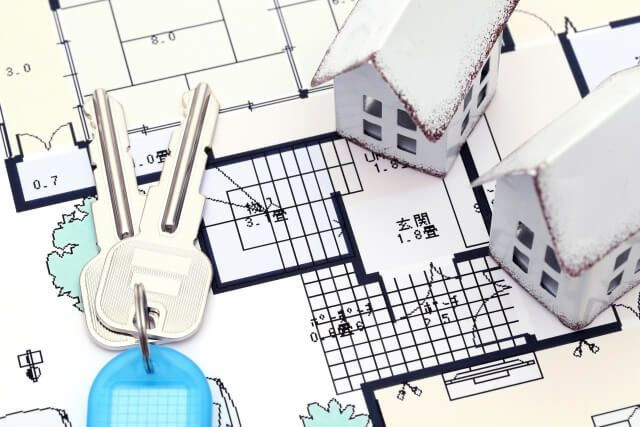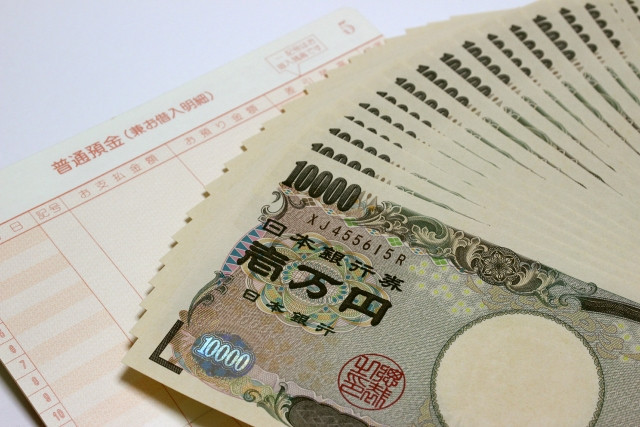“When you think of Japan, you often imagine a large city like Tokyo, but where we live, in Kumamoto, is a beautiful place full of nature. The central area has shopping malls and many restaurants and is easy to live in, and outside of the main city, you can enjoy recreational activities every season at the mountains and the sea. I feel relieved that the atmosphere is a little similar to my hometown in Mindanao.”
Left: Jerose ; Right: Jecel
Jerose and Jecel work as cleaning staff in Kumamoto, a prefecture in southwestern Japan. Although it is still little known in the Philippines, there are approximately 3,000 Filipinos living in Kumamoto, making it a very attractive and comfortable place to live. We interviewed Jerose and Jecel and their two supervisors about their work and life in Kumamoto.
Commissioned by Kumamoto Prefecture.
Impressions and Charms of Life in Kumamoto
Please tell us about the place you live, Kumamoto.

Jecel
These photos were all taken in Kumamoto. I’m often asked by my friends in the Philippines, “What’s Kumamoto like?” so I answer “You’ll find out when you come here! It’s a wonderful place!” There’s so many places to have fun, so I’m not tired of it at all even after living here for 5 years.
Jerose
We’re both from Mindanao, and we both prefer nature. Before coming to Japan, I saw images of the crowded commuter trains and thought, ‘Whoa...‘ In that regard, Kumamoto is really comfortable to live in. There are many fields and flowers, and it’s comforting. The rivers are so clean, and I was amazed that even the water from the tap is so clean like mineral water.
Jecel
While Kumamoto is more of the countryside when compared to other places in Japan, the central area of Kumamoto provides the perfect amount of city life. There’s a large shopping mall and many restaurants, so buying things we need is not a problem. There’s even stores selling Filipino food and ingredients.
▲Photo with 2 fellow staff members from the Philippines while in the city.
Jerose
There’s also the weather. Kumamoto is located in the southwestern part of Japan, so it hardly snows where we are. But it does snow in the mountains so you can enjoy winter sports. My family also wants to visit Kumamoto, especially to experience “winter in Kumamoto”.
Is there any place in particular you recommend?
Jecel
For me, it’s the “ONE PIECE” statues!
▲Kumamoto is where “ONE PIECE” creator Eiichiro Oda is from. There are 10 life-sized statues of the Straw Hat Pirates in various spots around Kumamoto.
Jecel
I’ve been a fan of “ONE PIECE” since I was in high school, so when I found out the author and illustrator Eiichirou Oda is from Kumamoto, I was really happy. I haven’t been to all the statues yet, but I want to before I return to the Philippines. That might mean staying for another 5 years (laughs).
Jerose
My recommendation is a place near the sea called “Amakusa” that my supervisor took me to. It is a place that greatly affected Christianity in Japan. It was fun to go dolphin watching.

Jecel
I also enjoyed the amusement park called “Greenland”. My supervisor drove us Filipino staff there. It was so fun that we stayed right up until the park closed.
That’s so nice! Is it common in Kumamoto for supervisors to take staff on trips like this?
Jecel
Kumamoto has a lot of nice people, but that’s not the case (laughs). Our supervisors are just especially kind people.
Jerose
My supervisor is like a mother to me. She told me, “It’s wonderful that you’re working for your family and the patients, but it’s also important to live for yourself while you’re young.” She cares about things in my life even outside of work.
Writer's Pick
Working in Kumamoto: Motivations, Difficulties and Rewarding Experiences
Since you brought up your supervisor, tell us more about your jobs.
Jecel
We work as cleaning staff at Sakurajyuji Hospital (Sakura=Cherry blossom, jyuji=Cross). After working as a technical intern trainee for 3 years from 2019, I began to work again under the Specified Skilled Worker Program.
Jerose
There are many Filipinos in the hospital we work at, and there are care workers and cooks as well. Most of us Filipinos live in the same dorm, so there are many friends I can count on if I need anything. We’ve been living in Japan for a while, so we often give advice to the people who just arrived in Japan.
*Technical Intern Training:A status of residence through which one can learn skills in Japan to take back to the Philippines, and can work in Japan for up to 5 years.
*Specified Skilled Worker:A status of residence created for foreign nationals to work in Japan utilizing specified skills. The period of stay is up to 5 years, but if you are able to obtain Type 2, there is no limit to the period of stay.
Where do you clean for work?
Jecel
Our hospital is very large, so depending on the day, we’re put in charge of several areas. I’m used to it now, but I was really nervous at first to enter rooms where patients are staying. I was worried about “What if I break something!” because there are important machines in the rooms.
Jerose
But when we’re cleaning, the patients say “Thank you for cleaning,” to us, so it’s also very rewarding.
Is there anything else that was difficult for you?
Jecel
Definitely Japanese.
Jerose
It was so difficult that I got headaches (laughs).
How did you study Japanese?
Jecel
I would study 10-15 minutes every day, and actively try to use the words that I learned. Then the Japanese staff would tell me “That’s correct!” or “That’s wrong”. Daily accumulation and practice are definitely important. But recently I’ve been slacking (laughs).
Jecel
My supervisor advised me, “Don’t be embarrassed. It’s okay to make mistakes, so try to speak a lot.” I think that’s really true. Many people who are thinking of coming to Japan are worried about whether they can speak Japanese, but you don’t have to worry so much because the people around you will speak slowly and teach you in a kind manner.
You have many kind people around you.
Jecel
I think so. But it may also be due to the local character of the people of Kumamoto. Not only the hospital supervisors and coworkers, but also the local people are very warm. When I get off the bus, the driver will say “Take care!” and an elderly lady in my neighborhood greeted me with “Welcome back!” on my way home. I was embarrassed at first, but I also started to reply with “Thank you!”
Jerose
It is nighttime by the time I finish work, but I feel safe going home alone. I feel that Kumamoto is a very safe place. I also attend church and made Japanese friends there. I also went camping with my friend who drove us there. Kumamoto has the longest staircase in Japan with 3,333 steps, which we all climbed together.
Why did you two want to work in Japan?
Jecel
I came to Japan to save up for my sister’s tuition.
Jerose
I also send money to my family. But I’m also saving up for my own dream.
What is your dream, Jerose?
Jerose
I’ve always wanted to be a teacher. I really respect the teacher I met when I was in 6th grade. I want to save up so that I don’t have to worry about anything financially and can instead fully focus on supporting my students’ education.
That’s wonderful! Do your families have anything to say about Kumamoto?
Jecel
My mother says, “How nice that it’s safe”. But when I say, “Then maybe I’ll live here forever,” she says, “You can’t! Come back!” (laughs).
Jerose
I’m really close to my younger sister, so I often call her while I’m eating meals. I’m often asked “What are you eating?!” so I end up showing off to her. “I’m eating Kumamoto ice cream~! It’s delicious~!” or “I had really delicious shabu shabu~! You cook the meat piece by piece in spicy soup~!” (laughs)
Lastly, please tell us your goals.
Jerose
To fulfill my dream of becoming a teacher, I’ll return to the Philippines one day. But I’m also interested in the Japanese education system, so I want to speak to the students who go to school near the hospital. Recently, when I told someone at work about this, they said, “You should go visit since you’re in Japan! I’ll ask the school for you.” So maybe it will come true.
Jecel
I want to obtain the Specified Skilled Worker Type 2 visa and work in Kumamoto for a long time. My mom says, “Please come home soon~”, but if I do, I think it’ll be as a vacation. Work can be hard, but I’m having a good time here.
After the interview ended, we met the supervisor who is “like a mother” to them. We received a comment from them, so we’re going to share it here in full. We hope that everyone who comes to Japan will meet good supervisors and colleagues and be able to live a happy life in Japan.
It’s been 5 years since they started their training, and I’m always grateful for their hard work at all times. The way they work now is even praised by other departments and patients.
After working together for the past four years, I feel very happy to be able to work together and to have met them. Around the time when the two first joined our staff, we were also anxious because it was our first time to accept trainees from overseas, but thanks to the character of Filipino nationals and their cheery attitude, we were able to get to know each other quickly, and enjoy working together every day.
What impressed me most about everyone was that despite not being able to communicate at first, they have this great ability to sense the current situation by watching and thinking right away about how they could be of help to us, and their willingness to take action. They’ve helped us every day more times than I can count.
When I’m busy, they ask “Are you okay? Do you need any help?” Even in the midst of the hard work to set up a new base, they said, “If we do it all together, it won’t be so hard. Let’s work hard together.” I feel as if we Japanese are being encouraged and taught a good attitude toward work. Now we are good colleagues and feel like family.
They’re popular with the patients, and they brighten up the atmosphere.
Our job as cleaning staff is to clean the rooms of patients who are recuperating in the hospital. They fully understand the idea of, “If my family was in the hospital, what would I want to do for them?” and they reflect it in their work.
Even though we speak different languages and have different cultures, we strive to understand each other, and they are colleagues I can trust from the bottom of my heart.

Web page for those who want to know more about Kumamoto
Interview Cooperation
Kyushu densetsu
Sakurajyuji hospital
SAKURA MACHI Kumamoto
©Kumamoto Prefectural Tourism Federation











































